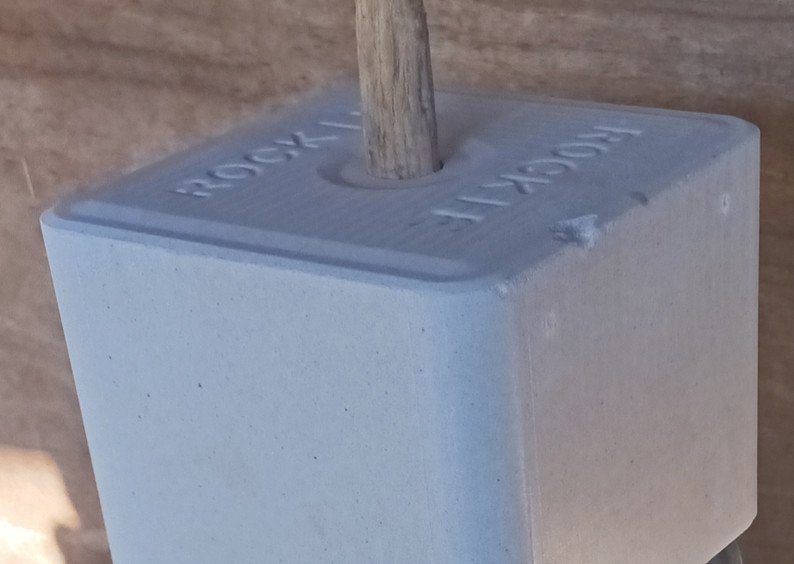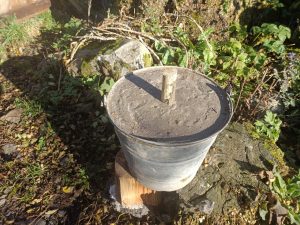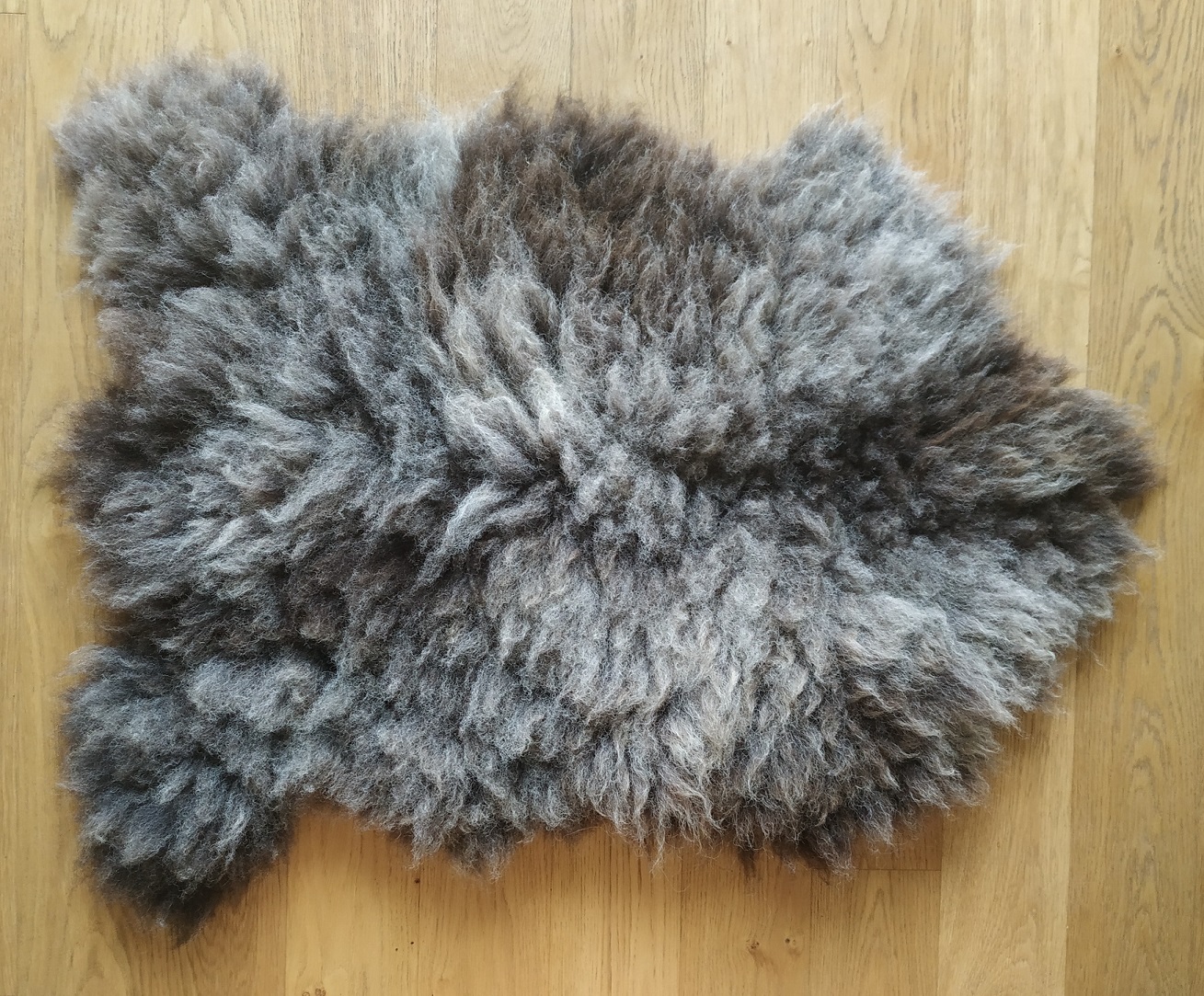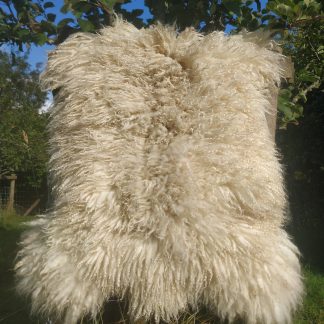
Smallholding life presents a continuous supply of small challenges, each unique many requiring a bit of thought. Much like life really. One such challenge was the salt lick. In the wild, many animals lick soil to get salt. For sheep, we try to make things a little easier by installing a salt lick. This comprises a solid block of salt and minerals in a cube around 15cm high with a hole in it. The idea is that the hole slides over a peg and keeps it in position.
Simple, you’d think.
My first installation was a small wooden platform with a piece of broom handle fitted through the middle. The bottom went into the ground and the salt lick sat on the platform. For extra strength, it was attached to a column in the sheep’s main shed. This lasted a few hours before it ended up horizontal.
So, extra wood and screws were added to fix it more firmly to said column. This lasted a bit longer, well, for a few months anyway. Then, it too was found in pieces on the ground.
 It’s not that sheep are particularly voracious lickers. Indeed, they are quite dainty when it comes to getting their salt. The problem is that they like to scratch themselves. And any old structure will do, be it sheep hurdles, gate posts, gates, feeders – you name it. The small square platform which supported the salt block was ideal. A nice wooden corner/edge about thigh height – perfect. So, they’d get their salt and then finish off with a scratch. The wood just cracked under the pressure.
It’s not that sheep are particularly voracious lickers. Indeed, they are quite dainty when it comes to getting their salt. The problem is that they like to scratch themselves. And any old structure will do, be it sheep hurdles, gate posts, gates, feeders – you name it. The small square platform which supported the salt block was ideal. A nice wooden corner/edge about thigh height – perfect. So, they’d get their salt and then finish off with a scratch. The wood just cracked under the pressure.

I pondered this for a while, then came up with a new idea. There were a couple of old steel buckets lying around that had rusty holes all over them. Upside down, a bucket would be quite stable. It would also be round, so no perfect little scratch points. It just needed to be heavier.
So, I drilled a hole in the bottom, thrust the peg through and filled it with concrete. I left a small amount of the peg proud at the bottom; this would go into the ground to provide extra stability.
All good so far.
Next stop was to put it somewhere. No point in putting it outside, the rain would soon wash the salt away. So, back to the sheep shed it went and, aside from transporting a now very heavy bucket, installation proved quite straightforward. This is unusual in smallholding tasks (there’s usually some sort of complication like a large rock in the way) and I savoured the moment.
Next was to round up some sheep and get their feedback. But they were busy chewing the cud a good distance away, at least 10m or so, and the sun was shining and they looked content, so I headed off to find the next job on miy list and left them too it.

Nicole, slightly more determined than me (it’s quite possible she may have mentioned the need for the sheep lick stand to be repaired once or twice) succeeded where I had failed and introduced the sheep to their upgraded salt supply. By all accounts, they were most impressed, but with one small complaint.
 The salt was resting on galvanised steel, effectively steel with a zinc coating. The worry was that zinc could react with the salt and cause zinc poisoning (which, as it turns out, would not happen). Anyhow, I created a wooden barrier just to be on the safe side (round, not square).
The salt was resting on galvanised steel, effectively steel with a zinc coating. The worry was that zinc could react with the salt and cause zinc poisoning (which, as it turns out, would not happen). Anyhow, I created a wooden barrier just to be on the safe side (round, not square).
And it’s still standing…







